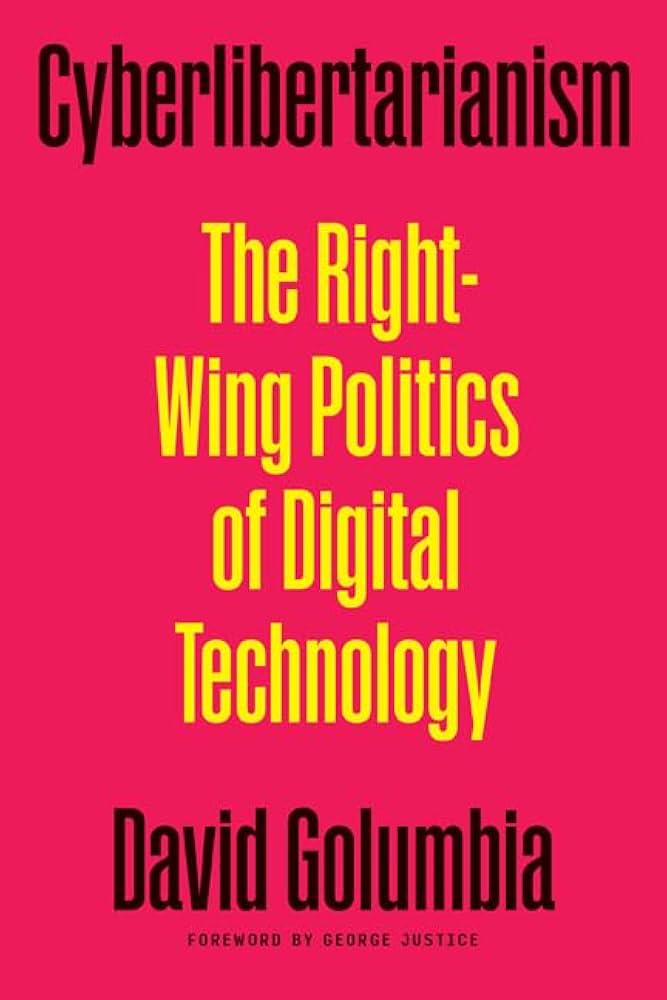This article is part of the b2o: an online journal Special Issue “The Gordian Knot of Finance”.
Return of the Repressed: Oceanwide’s Angeleno Ghost City
Michelle Chihara
In the early 2000s, the American press became fascinated with Chinese “ghost cities.” Images of darkened condo towers in new but empty districts appeared across the media, from Al Jazeera to CNN. In Ordos, at the edge of the Gobi desert, a modernist museum like a flattened Lego egg sat surrounded by canyons of silent skyscrapers. Tianducheng was a faithful mini-recreation of the city of Paris, France, complete with flower boxes and Tour Eiffel, that stood eerily quiet. Other extravagant developments were never finished or occupied, from Chenggong to Guangzhou.[1]
China’s unprecedented boom cycle had provoked a building frenzy far beyond what the economy could absorb. When the bubble burst, thousands of newly middle-class Chinese investors lost their savings and never received the homes they had been promised. The results looked post-apocalyptic. Trampled banners in deserted ballrooms and parkways gathered dust, among row upon row of echoing McMansions, with vines crawling up the unused walls.
Across the press, and in Chinese official discourse itself, the ghost city trope “supplied a charged new metaphor through which to report on China’s property sector” (Woodworth 2017, 1273). The idea never gained a precise sociopolitical definition. It was always a phrase that served as a lightning rod for controversy and debate, even as it gained currency within China itself. The state worried about ghost cities, as it sought to balance its command-and-control policies with the actions taken by Chinese families now free to use real estate—in the proud US tradition—as both shelter and primary investment strategy (Ibid.).
Most of the journalists writing for North American audiences assumed that ghost cities were the problems of a planned economy not our own. Some economic papers on the topic also functioned on the premise that authoritarian capitalism and its failure to respond to market signals were to blame for “government subsidized overbuilding.”[2] Both presumed that the ghosts were exotic and foreign, fallout from misguided policies. But the realities of the global economy have brought these specters back to haunt the West.
One critic calls London’s architectural trend of catering to the needs of empty luxury dwellings the necrotecture of the global super-rich (Atkinson 2019). Dubai and South Korea have ghost cities; the website Vacant New York tracks empty commercial and residential properties; historic chateaux listed as short-term luxury rentals on AirBnB dot the French countryside amongst the overcrowded and under-funded banlieues. To many Marxist critics, this is garden-variety over-accumulation. These are simply the busts at the end of the boom cycles, they’re endemic to capitalism, authoritarian or liberal. And it’s true that, like the original ghost towns of frontier California, the Ordos Municipality was built on speculative mining profits.
Even if they’re not new, however, the dynamics that created ghost cities in China persist and metastasize. If anything, they’re getting more severe. The Western coverage of China may have been laden with the ironies of Orientalist clichés, and yet, the aesthetics were a transnational means of involving the public. Ghost cities give democratic stakeholders a way to see the severity of the problem, a way to grasp the local consequences of finance’s Gordian knot, in all its international interconnectedness.
***
In downtown Los Angeles, about a year ago, base jumpers and graffiti artists claimed an abandoned development as their own by filming viral videos from inside the empty towers. On Instagram, one video is captioned “the calm before the storm.” It opens with a wide shot, drone footage set to hip hop.
Two young men stand at the top of an unfinished building. On iron girders high above the city, they swim in golden sunset light. As they move catlike across the bare beams, they look deliberate but impossibly relaxed. They control the swoop of their cameras with their thumbs.
In the next beat, they base jump. A series of five narrow rectangular parachutes glides down, flashes popping off all around. But if the silks spiraling between the graffitied towers were the main attraction, the preamble at sunset best captures the lonely dangerous beauty of the act.
Every floor of these unfinished high-rises–on every level, in every window–was tagged by a graffiti crew. Leaving a mark on the buildings became, through online subcultures, a sine qua non of street self-branding. The aesthetic additions to the abandoned towers, at the heart of the city, brought press attention and sparked global interest. The police stationed themselves around the perimeter, parked at every corner of the lot, to shut it all down.[3]
Most of the public discussion at the time centered on whether or not the graffiti was art. Should taxpayers should be responsible for the clean-up and police patrols? But in February, the Los Angeles Times’ last article about the empty buildings called them a “Capital Fail”(Miranda 2024). Of the many journalistic articles about the towers, this one, in the Arts and Culture section, came the closest to articulating what the ghost towers in eye of the storm truly represented: The fact that land use in global cities, including in the heart of urban America, is being driven by the opaque needs of international capital.
***
The original project in the heart of downtown L.A. was built by a Chinese company called Oceanwide (now Tonghai), through a funding mechanism known as the EB-5 visa program. This program has been inviting foreign investment into the US since the 1990s, giving predominantly Chinese and sometimes Indian people a way to transform their home currencies into dollars, while essentially purchasing green cards. If they invest a certain amount, they receive a financial path to permanent residency and citizenship. The program is a highly-contested set of rules, subject to multiple news investigations and Senate hearings, with detractors labeling it “Citizenship-for-Sale.”[4] EB-5 investments have raised persistent concerns about fraud and money laundering.[5] And yet, despite recent controversies around Trump’s son-in-law Jared Kushner using the program to finance part of a deal in New York, the program was recently renewed (Hackman and Putzier 2022; Democracy Forward 2022). EB-5 was originally supposed to create American jobs in rural areas or districts with high unemployment. The evidence suggests that it has, instead, primarily served the needs of international real estate developers.
Oceanwide is down the block from the Metropolis, another EB-5 project created by some of the same players. The Metropolis was completed, and it includes a finished boutique hotel with requisite rooftop pool and spa, plus luxury condos. The developer sold the complex at a loss in 2022 (TRD staff 2022). The owners have had trouble filling the sparkling columns. It’s not so much a ghost city as a glass zombie.
Commercial vacancy rates are at a record high in downtown Los Angeles, and EB-5 investments have contributed to a glut of overly-vacant luxury units, in an area desperately in need of affordable housing.[6] Some of the Oceanwide contractors are now suing to get paid. The property was named in an FBI warrant targeting the corrupt city councilman, Jose Huizar, who is serving time for fraud related (of course) to real estate development and a bribery scheme with yet another Chinese developer.[7] The results, in other words, for the city, are an aesthetically interesting mess. And as with the scandals around the mayor of New York taking bribes from Turkey, local politics have become inseparable from the demands of far-flung developers.
During China’s boom, unsurprisingly, the economy provided Chinese investors with myriad methods of circulating their funds into global dollars, like EB-5. But this isn’t exactly what Xi Jinping wanted. Since 2016 or 2017, Jinping has been cracking down on capital controls. By 2020 and 2021, the Chinese state was locked in a game of chicken with its own real estate giant, Evergrande. The Communist Party had generally worked to backstop problems in its economy, to stop them from spreading. But in the face of $300 billion debts and the need to slow overheating markets, Evergrande was ultimately forced to back down, all the way down, into liquidation (Wu and Steinberg 2017; Saeedy and Feng 2024). You can now see some of Evergrande’s ghost cities being demolished online.
The CCP wanted to water its local economy with more of its own funds, it wanted investors to spur growth at home. It also wanted to discourage high-risk, high-reward speculation. These goals are sometimes at odds.
Money created quickly is fast money. It carries a certain momentum when it goes looking for high rates of return. It needs appreciating asset classes in which to park itself. Much of the capital that has fled China has gone against the wishes of the CCP, but not all, and not all fast money can technically be counted as fraud.
Money laundering, in the original sense, meant hiding the criminal source of profits by routing the funds through legitimate businesses. But much of the fast money coming out of China falls into more of a grey area, within systems that obscure all profit sources equally. Drug cartels, Eastern European oligarchs, crooked Malaysian prime ministers, American tech entrepreneurs, and middle-class Chinese investor—they all share the same access to financial anonymity.
Capital flees into dark money, increasingly out of reach of the regulations of any one nation. As soon as Chinese developers amass a certain level of capital, they become international players. Once fortunes reach a certain size, they enter a space in some ways above and between Wall Street and The City, above and between the laws on the books in any one center of global finance—what one financial journalist calls Moneyland (Bullough 2019a).
The US national security state does sometimes lash out against truly illicit money, with tools largely provided by the Patriot Act. The Department of Justice has powerful allies and works with NGOs like Global Financial Integrity. And at the same time, the US is the fastest growing tax haven in the world (Bullough 2019; Bullough 2019b). It has brought the race to the bottom of the deregulation barrel back to its own shores. While the US is the home base for the most powerful shadow banks and hedge funds, capital flows with no restrictions across borders, hunting for the next loophole or program that might provide an edge or an arbitrage opportunity. The aftermath of the 2008 crisis has only entrenched the dynamics that knit high-end real estate developers across the globe into one unstable, highly speculative market.
Many middle-class Chinese investors have lost out through the EB-5 program, alongside Angeleno taxpayers. But the needs of finance’s big dogs never jibed with the needs of regular people. International capital pushes funds into luxury building trends that don’t take their cues from local markets. The result is almost never good local jobs, the erstwhile promise of EB-5. It’s empty towers in the midst of a housing crisis, as the tent cities continue to rise around the tagged and abandoned monuments to indifferent global wealth.[8]
***
The drone footage at sunset—with the bright painted letters popping against a tangerine sky and the young people dangling their legs off sky-high rafters—was created by young street artists and influencers. They were looking to create value, for themselves, on the social media platforms owned by corporate America. They incidentally aestheticized faultlines in the global regime. But the images haunted the public and drew audiences because they expose a tear in the fabric of the city.
The display of daring by the base jumpers invites comparison with an iconic 1932 photograph of iron workers in New York City. The New York Herald-Tribune’s black-and-white image of “Lunch Atop A Skyscraper” similarly captured the public’s attention. In that moment, workers on a beam 850 feet in the air—eating and smoking— sat in for the aspiration and hopes of a generation of immigrants. Their bravado became the symbol of the skyscraper itself, an incarnation of the zeitgeist.
Today, the young men on the girders with their drones are the dystopic version, Miracle on 34th Street reshot as Blade Runner. Romanticizing the bravery of the Irish laborers in the ‘30s validated their role in the emerging financial order, just before the New Deal. The 21st century ghost towers in L.A. are more counter-cultural, more cyberpunk than daily news, more dystopic carnival than imagined community.
At the same time, the taggers and base jumpers created a kind of impromptu and spontaneously vibrant public space. They acted as a reminder that in the wake of hollowed-out cultural institutions, in search of least a certain density of weak ties, people will take back the city center. The aesthetic is the only way for the public to engage, on the ground, with the consequences of dark global finance.
***
In moneyland, it’s almost impossible for local municipalities like Los Angeles to hold developers accountable. The concrete construction of the Oceanwide towers means the luxury units can’t be remodeled into smaller apartments. Even demolishing the towers represents an extraordinary expense in a dense urban context.
Corporate partnerships that span both countries, and currency-sterilization in a dollar-based global economy, are pulling China and the US deeper into an increasingly complex relationship. Conflict has been growing around everything from the Belt and Road program to China’s push to control resources in Africa to the data and IP policies of social media giant TikTok. International security concerns and trade wars, state capitalism and crony capitalism and the gray areas in-between, all are increasingly enmeshed. Local interests are increasingly pit against the needs of capital, with no resolution in sight, as the temperature rises (Loughlin and Grimsditch 2021; Ip 2024).
There are coalition groups like the Hedge Clippers (as in, they clip the excess growth of hedge funds) trying to address issues like the carried interest tax loophole, a boring-sounding but multi-billion dollar glitch that lets hedge funds avoid massive amounts of taxation. Organizations like LAANE and SAJE, here in Los Angeles, are doing the long slow work of organizing community stakeholders across sectors. These groups seek to hold big, international money locally and democratically accountable. Aesthetics will always play a part in that organizing work.
Ghost cities may once have seemed exotic and foreign. But the street artist Nick Sozonov’s drone shots of Oceanwide bring the trope home and give local audiences purchase on the topic. Attention spans now move at the speed of TikTok. It’s hard to keep people focused on the details of financial loopholes, they keep slipping away behind a cat meme. But art reminds us that when we look in the mirror, the empty towers are still there, looming right behind us.
Michelle Chihara is Associate Professor of English at Whittier College, where she teaches media studies, contemporary American literature, and journalism. Recent peer-reviewed publications include chapters in Money and American Literature and Los Angeles, A Literary History, both forthcoming in Cambridge University Press (2025. Other essays have appeared in Post45: Contemporaries, Politics/Letters, Bloomberg, n+1 and Avidly.org. She was formerly the section editor for Econ & Finance at The Los Angeles Review of Books, where she also served as Editor-in-Chief. Her current book project is a journalistic trade book about behavioral economics, working title Behave! The science of influence in American culture.
References
Atkinson, Rowland. 2019. “NECROTECTURE: Lifeless Dwellings and London’s Super-Rich.” INTERNATIONAL JOURNAL OF URBAN AND REGIONAL RESEARCH 43 (1): 2–13. https://doi.org/10.1111/1468-2427.12707.
“BASE Jumper Leaps from Graffitied Towers in Downtown L.A.” 2024. KTLA News at 5. KTLA. https://www.youtube.com/watch?v=x9dEFqbgX-Q.
Bullough, Oliver. 2019a. Moneyland. New York: NY: St. Martin’s Press.
———. 2019b. “The Great American Tax Haven: Why the Super-Rich Love South Dakota.” The Guardian, November 14, 2019, sec. World news. https://www.theguardian.com/world/2019/nov/14/the-great-american-tax-haven-why-the-super-rich-love-south-dakota-trust-laws.
Chan, Melissa. 2009. “China’s Empty City.” Al Jazeera, November 09, 2009. YouTube https://youtu.be/0h7V3Twb-Qk?si=1p3oQJcXuaBSuBcB
Chung, Stephy. 2016. “Abandoned Architectural Marvels in China’s Largest Ghost Town.” CNN, November 21, 2016. https://www.cnn.com/style/article/china-ordos-ghost-town/index.html.
Democracy Forward. 2017. “Uncovering Kushner’s Involvement in Renewing Visa Program,” 2017. https://democracyforward.org/lawsuits/uncovering-kushners-involvement-in-renewing-visa-program/.
Hackman, Michelle, and Konrad Putzier. 2022. “Congress Set to Revive EB-5 Program Giving Green Cards to Foreign Investors.” The Wall Street Journal, March 9, 2022. https://www.wsj.com/articles/congress-set-to-revive-eb-5-program-giving-green-cards-to-foreign-investors-11646861559.
“Hearing on ‘Citizenship for Sale: Oversight of the EB-5 Investor Visa Program’ before the Senate Committee on the Judiciary on June 19, 2018 | USCIS.” 2018. June 19, 2018. https://www.uscis.gov/tools/resources-for-congress/testimonies/hearing-on-citizenship-for-sale-oversight-of-the-eb-5-investor-visa-program-before-the-senate.
Huang, Josie. 2017. “As DTLA Vacancies Rise, Landlords Increase Breaks on Rent, Parking | LAist,” September 15, 2017. https://laist.com/news/kpcc-archive/in-high-vacancy-dtla-landlords-offer-move-in-speci.
Ip, Greg. 2024. “America Is Sliding Toward Chinese-Style Capitalism.” The Wall Street Journal, March 21, 2024. https://www.wsj.com/economy/america-is-sliding-toward-chinese-style-capitalism-fff67df4.
“L.A. Joins Ranks of Cities with ‘ghost Towers’ with Graffiti-Covered Oceanwide Plaza.” 2024. Los Angeles Times. February 10, 2024. https://www.latimes.com/entertainment-arts/newsletter/2024-02-10/la-oceanwide-plaza-essential-arts-arts-culture.
Lloyd, Annie. 2017. “Downtown L.A. Vacancy Rate Highest In 17 Years | LAist.” LAist, September 16, 2017. https://laist.com/news/downtown-la-vacancy-rate-highest-in.
Loughlin, Neil, and Mark Grimsditch. 2021. “How Local Political Economy Dynamics Are Shaping the Belt and Road Initiative.” Third World Quarterly 42 (10): 2334–52.
“Newly-Discovered EB-5 Scam Highlights Fraud, National Security Weaknesses, Need for Long-Term Reform.” 2017. https://www.grassley.senate.gov/news/news-releases/newly-discovered-eb-5-scam-highlights-fraud-national-security-weaknesses-need.
“Our Latest Report: Housing Shortage on the Rise in LA – The Angeleno Project.” 2023. https://theangelenoproject.org/the-hard-facts/.
Saeedy, Alexander, and Rebecca Feng. 2024. “Evergrande Was Once China’s Biggest Property Developer. Now, It Has Been Ordered to Liquidate. – WSJ.” The Wall Street Journal, January 20, 2024. https://www.wsj.com/articles/evergrande-faces-imminent-liquidation-after-talks-with-top-creditors-break-down-4af5f657.
TRD staff. 2022. “Greenland Sells Metropolis Apartment Tower for $504 Million.” The Real Deal, November 9, 2022. https://therealdeal.com/la/2022/11/09/greenland-sells-metropolis-apartment-tower-for-500m/.
Witthaus, Jack. 2023. “Downtown in Distress: Los Angeles Signals Why Nation’s Office Space Headaches Could Last for Years.” CoStar, March 19, 2023. https://www.costar.com/article/531623023/downtown-in-distress-los-angeles-signals-why-nations-office-space-headaches-could-last-for-years.
Wu, Jane, and Julie Steinberg. 2017. “Big Chinese Deals Stall on Capital-Outflows Clampdown.” The Wall Street Journal, January 27, 2017. https://www.wsj.com/articles/big-chinese-deals-stall-on-capital-outflows-clampdown-1485563072?mod=article_inline.
Zahniser, David, Emily Alpert Reyes, and Joel Rubin. 2019. “FBI Corruption Probe Goes beyond L.A. Councilman Jose Huizar to Include Other City Hall Figures.” Los Angeles Times, January 12, 2019, sec. California. https://www.latimes.com/local/lanow/la-me-ln-huizar-warrant-20190112-story.html.
[1] Al Jazeera (Chan, 2009) and CNN (Chung, 2016) are just two of many examples.
[2] See Ghost Cities of China website at MIT (http://ghostcities.mit.edu/)
[3] This was widely covered in the news, but see (“BASE Jumper Leaps from Graffitied Towers in Downtown L.A.” 2024)
[4] See (“Hearing on ‘Citizenship for Sale: Oversight of the EB-5 Investor Visa Program’ before the Senate Committee on the Judiciary on June 19, 2018 | USCIS” 2018)
[5] See (“Newly-Discovered EB-5 Scam Highlights Fraud, National Security Weaknesses, Need for Long-Term Reform” 2017)
[6] See (Witthaus 2023), (Huang 2017) (Lloyd 2017)and (LA CAN) and (SAJE) reports.
[7] See LA Times article for a link to the federal warrant (Zahniser, Reyes, and Rubin 2019)
[8] (“Our Latest Report: Housing Shortage on the Rise in LA – The Angeleno Project” 2023)






